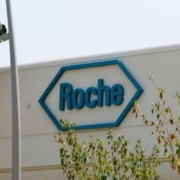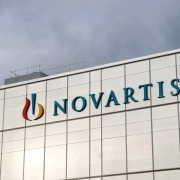Takeda and Astellas key firms in advancing early gene therapy research in Japan
The gene therapy research in Japan has gained significant momentum due to the SAKIGAKE designation system and government-led initiatives like the “Project for Regenerative/Cellular Medicine and Gene Therapies” to accelerate research and development (R&D) to create new technologies for gene/cell therapy. In advancing early gene therapy research in Japan, Takeda and Astellas currently stand as key firms leading the overall preclinical (PC) development with four candidates each and contributing 57% of PC gene therapy research in the country, says GlobalData, a leading data and analytics company.
According to GlobalData’s Pharmaceutical Intelligence Center, as of 16 September 2024, in Japan there are 14 gene therapies in PC stage of development targeting eight different therapy areas with a significant focus on oncology, ophthalmology, hematological disorders, and the central nervous system (CNS).
Globally, the first approved gene therapy was voretigene neparvovec (Luxturna) from Spark Therapeutics in December 2017 in the US and in November 2018 in the EU for Leber congenital amaurosis and retinitis pigmentosa. In the Asia-Pacific, the first approved gene therapy was beperminogene perplasmid (Collategene) from Anges in March 2019 in Japan for critical limb ischemia and peripheral arterial disease.
Nelluri Geetha, Pharma Analyst at GlobalData, comments: “AnGes is the first Japanese company to enter the gene therapy commercial space through the launch of Collategene in the country. AnGes is conducting Phase II (US and Japan) and III (Turkey) clinical trials for Collategene for cardiovascular, gastrointestinal, and hematological disorders therapy areas, aiming to expand its usage to other diseases.”
According to GlobalData’s Pharmaceutical Intelligence Center, three gene therapies are approved in Japan, namely – onasemnogene abeparvovec (Zolgensma) for spinal muscular atrophy from Suzuken Co Ltd, voretigene neparvovec (Luxturna) from Novartis Pharma KK and Collategene. Also, Collategene is in the pre-registration stage for occlusive arterial disease (cardiovascular) and arterial leg ulcers (dermatology).
The gene therapies in Phase II clinical trials are DS-2325a from Daiichi Sankyo, MTG-201 from Momotaro-Gene and TSHA-102 from Astellas Pharma for genetic disorders, oncology, and CNS respectively.
In 2017, Astellas established “Astellas Gene Therapies,” a Center of Excellence developing genetic medicines with a particular focus on ophthalmology and genetic disorders. Similarly, Takeda established T-CiRA (Center for iPS Cell Research and Application (CiRA)) in 2016, a 10-year joint research program aimed at developing innovative treatments, including cell and gene therapies, to address unmet patient needs.
Also, from the preclinical to Phase III stage of development around seven Japanese companies and three universities are working on various gene therapies.
Geetha concludes: “Though Takeda and Astellas are playing a significant role in advancing early gene therapy research in Japan, the success of early gene therapy research in clinical trials will define the success of these companies in this space.”
Source: GlobalData





 Reuters Health
Reuters Health

